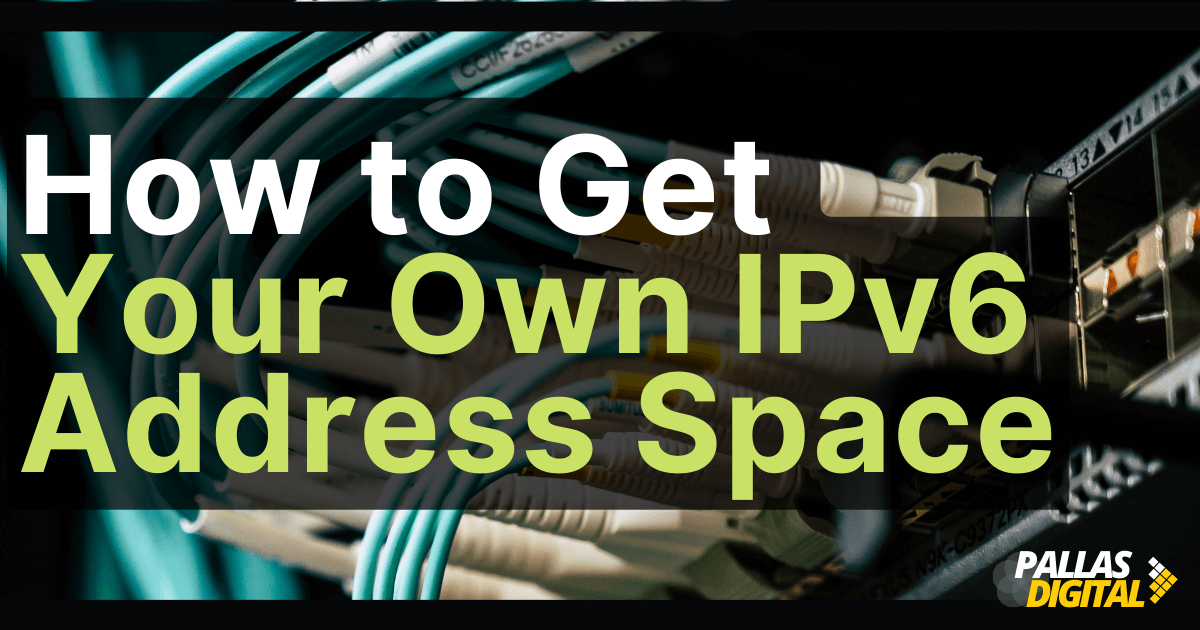
Thank you for choosing IPv6!
Perhaps you have already attended my IPv6 Foundation Master Class and are now ready to activate IPv6. Are you still missing the right, independent IPv6 addresses?
Your question is probably: How do you get my own IPv6 address space?
After reading this article, you will know which of the various options is the right one for your use case.
Basically, there are various methods for obtaining IPv6 address space. I will explain these in detail here. The options will normally result in exactly the right solution for you.
Method 1 – Use Your Provider’s Address Space
The usual and simple way is to ask your provider for IPv6 addresses.
The provider will then provide a subnet from its PA space (Provider Aggregatable) allocated by the Regional Internet Registry (“RIR”, in Europe the RIPE NCC, in America ARIN) and assign it to you.
Depending on the type of provider, the subnet is either routed to your hosting environment or to your Internet access.
The advantage of this solution is that you as a customer do not need any special routing equipment and do not have to be a direct RIR member or be in contact with the RIR. Therefore, the strict specifications for IP address space do not have to be adhered to at all times.
The disadvantage is that the assigned prefix originates from the provider’s IPv6 range and you must completely re-address your entire network if you change providers.
The network can therefore not be moved to another provider. In addition, there is no possibility of BGP multihoming, i.e. making your network redundantly accessible via different providers.
Method 2 – Your Own Provider Independent IPv6 Address Space (IPv6 PI Space)
An alternative to method 1 (using PA Space of your provider) is to apply for your own IPv6 PI Space (Provider Independent IPv6) via a Local Internet Registry (LIR). This network is directly assigned to you, whereby a LIR represents the interface to the RIPE NCC. In principle, a RIPE member is automatically a LIR.
For an IPv6 PI Space allocation, the LIR must send a form to the RIPE NCC. The form is available in the LIR portal of the RIPE NCC and must be submitted online.
The RIPE NCC provides basic requirements and information on Provider Independent IPv6 resources in its document Contractual Requirements for Provider Independent Resource Holders in the RIPE NCC Service Region.
A minimum network size of /48 is mandatory for the assignment. No special network plans or documentation are required for this size. For networks larger than /48, the LIR (i.e. the RIPE member) must explain in detail to the RIPE NCC why and for what purpose this larger allocation is necessary.
Furthermore, the LIR must sign a standard contract with the end user (you).
You can also change the LIR at a later date. As long as the time between two active LIR contracts is not too long, your IPv6 address space will not be lost. However, you must have an active LIR contract in order to receive and keep it.
An initial fee for applying for the IPv6 address resources and an ongoing fee for maintenance must be charged to the end customer in this context, as the RIPE NCC itself charges the LIR annually for allocation and maintenance. It will therefore be very difficult or even impossible to obtain this LIR service free of charge. As a rough guide, you can assume amounts between 100-300 € per year.
With the IPv6 PI Space, you have the option of changing hosting and Internet providers and retaining your address range, so it does not have to be renumbered when you move.
It is also possible to have your network announced at different locations by different providers on the Internet, thus creating a multihoming or anycast architecture.
Many large hosting providers offer to announce IPv6 PI Space for you on the Internet using BGP. Some charge an ongoing or one-off fee for this, while others include it free of charge as part of a larger hosting package.
So you need at least two contracts for IPv6 PI Space:
One with a sponsoring LIR, which is the interface to the RIPE NCC, and one with a hosting or Internet provider that announces the network for you.
If you are looking for an LIR that has a lot of experience in applying for IPv6 PI Space for customers and offers this service, we can recommend iternas GmbH.
Method 3 – Your Own IPv6 PI Space and Active Participation in Internet Routing with Your Own BGP AS
If you want to announce your network yourself on the Internet via BGP, you also need an AS (BGP Autonomous System) number.
However, the requirements for this are much more extensive, as is the equipment required for BGP Internet routing.
The costs for this equipment and the necessary BGP peerings with upstream providers are only lower than the benefits in complex cases.
Method 4 – become a RIPE member & LIR yourself

Finally, you have the option of becoming a Local Internet Registry (LIR) yourself. This can make sense for some larger companies. However, the advantages and disadvantages are complex and the degree of difficulty in planning and implementation is higher than with solutions 1 to 3.
If you are thinking about taking this route, you will have to pay a signup fee of currently (in 2024) €1,000 for RIPE membership alone (check ARIN for details in the Americas). This fee includes the membership fee for the first year.
The follow-up years currently cost 1,550€.
Information about the current RIPE NCC fees:
https://www.ripe.net/membership/member-support/payment/
In addition, there are the costs for the routing equipment (see above) and for the technical operation of the routing connections.
Further information
The IPv6 portal of the RIPE NCC provides constantly updated information on the subject of IPv6 addressing and address allocation.
There is also a maintained IPv6 document area of the RIPE NCC with all relevant IPv6 documents.
Detailed information on the current IPv6 Address Allocation and Assignment Policy from the RIPE NCC.
You may be interested in my free online training course IPv6 Essentials – Foundations of the new Internet Protocol on the subject of IPv6.

